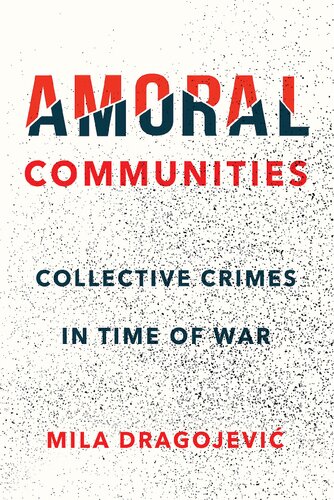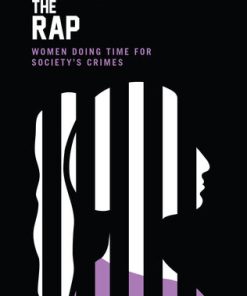Amoral Communities: Collective Crimes in Time of War by Mila Dragojević 9781501739842 1501739840
$50.00 Original price was: $50.00.$25.00Current price is: $25.00.
Amoral Communities: Collective Crimes in Time of War Mila Dragojević – Ebook Instant Download/Delivery ISBN(s): 9781501739842, 1501739840

Product details:
- ISBN 10:1501739840
- ISBN 13: 9781501739842
- Author: Mila Dragojević
Amoral Communities
Collective Crimes in Time of War
In Amoral Communities, Mila Dragojević examines how conditions conducive to atrocities against civilians are created during wartime in some communities. She identifies the exclusion of moderates and the production of borders as the main processes. In these places, political and ethnic identities become linked and targeted violence against civilians becomes both tolerated and justified by the respective authorities as a necessary sacrifice for a greater political goal.
Dragojević augments the literature on genocide and civil wars by demonstrating how violence can be used as a political strategy, and how communities, as well as individuals, remember episodes of violence against civilians. The communities on which she focuses are Croatia in the 1990s and Uganda and Guatemala in the 1980s. In each case Dragojević considers how people who have lived peacefully as neighbors for many years are suddenly transformed into enemies, yet intracommunal violence is not ubiquitous throughout the conflict zone; rather, it is specific to particular regions or villages within those zones. Reporting on the varying wartime experiences of individuals, she adds depth, emotion, and objectivity to the historical and socioeconomic conditions that shaped each conflict.
Furthermore, as Amoral Communities describes, the exclusion of moderates and the production of borders limit individuals’ freedom to express their views, work to prevent the possible defection of members of an in-group, and facilitate identification of individuals who are purportedly a threat. Even before mass killings begin, Dragojević finds, these and similar changes will have transformed particular villages or regions into amoral communities, places where the definition of crime changes and violence is justified as a form of self-defense by perpetrators.
Table contents:
1. The Making of Amoral Communities
2. Evidence of Amoral Communities
3. The Exclusion of Moderates
4. The Production of Borders
5. Memories and Violence
6. Violence against Civilians as a Political Strategy
Conclusion
People also search:
amoral communities: collective crimes
amoral conduct
amoral society
amoral afrikaner
amoral crime
You may also like…
History - Military History
Hidden Horrors Japanese War Crimes in World War II 2nd Edition Yuki Tanaka
History - Asian History
Hidden Horrors Japanese War Crimes in World War II 2nd Edition Yuki Tanaka
Uncategorized
Uncategorized
Visualizing War Emotions Technologies Communities 1st Edition Anders Engberg-Pedersen (Editor)
Uncategorized
War and Collective Identities in the Middle Ages East West and Beyond Yannis Stouraitis (Editor)
History - Asian History
War Crimes in Japan Occupied Indonesia A Case of Murder by Medicine Baird J Kevin Marzuki Sangkot
Biography & Autobiography - Political
Uncategorized












